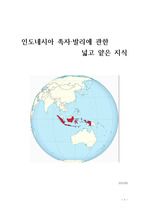제주특별자치도 대중교통시설에서 분리된 진균의 분포
(주)학지사
- 최초 등록일
- 2015.11.05
- 최종 저작일
- 2014.12
- 6페이지/
 어도비 PDF
어도비 PDF
- 가격 3,000원

* 본 문서는 배포용으로 복사 및 편집이 불가합니다.
서지정보
ㆍ발행기관 : 한국보건기초의학회
ㆍ수록지정보 : 보건기초의학회지 / 7권 / 3호
ㆍ저자명 : 정무상
목차
서 론
연구 방법
연구 결과
고찰 및 결론
참고문헌
한국어 초록
영어 초록
Indoor air quality (IAQ) is a term which refers to the air quality within and around buildings and structures, especially as it relates to the health and comfort of building occupants. IAQ can be affected by gases (including carbon monoxide, radon, volatile organic compounds), particulates, microbial contaminants (mold, bacteria), or any mass or energy stressor that can induce adverse health conditions. There are some varieties of mold that contain toxic compounds (mycotoxins). However, exposure to hazardous levels of mycotoxin via inhalation is not possible in most cases, as toxins are produced by the fungal body and are not at significant levels in the released spores. The primary hazard of mold growth, as it relates to indoor air quality, comes from the allergenic properties of the spore cell wall. More serious than most allergenic properties is the ability of mold to trigger episodes in persons that already have asthma, a serious respiratory disease. In this study, measurements of microorganisms were taken from the city bus numbered 40 in Jeju Island public transport. The average concentration of bacteria in the air is shown as 185.0 CFU/m3. Buses recording <50 CFU/m3 indicated by 10 (25.0%), buses recording 50-100 CFU/m3 indicated 7 (17.5%), buses recording 100-150 CFU/m3 indicated 3 (7.5%), buses recording 150-200 CFU/m3 indicated 3 (7.5%), buses recording 200-250 CFU/m3 indicated 0 (0.0%), buses recording 250-300 CFU/m3 indicated 9 (22.5%), buses 300-400 CFU/m3 indicated 4 (10%), and buses recording 400-500 CFU/m3 indicated 4 (10.0%). In addition, 52 of mold were recorded as a result of careful identification as follows, 21 of Aspergillus spp. (40.4%), 18 of Penicillium spp. (34.6%), 3 of Cladosporium spp. (5.8%), 2 of Alternaria spp. (3.8%), and 2 of Curvularia spp. (3.8%). There were also 6 unidentified stains (11.6%). This result was a level which satisfies the 800 CFU/m3 of air quality standards.
참고 자료
없음
"보건기초의학회지"의 다른 논문
더보기 (1/6)




